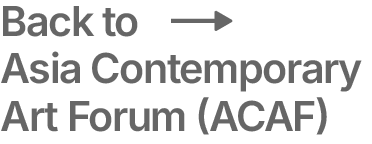Interview with Mihoko Ogaki
1. How did you start making art?
As a child I was suffering from asthma, so instead of playing outside with friends I would rather stay home alone and draw. And maybe I have also been influenced by my mother, who was doing oil paintings. At the age of 15, I expected to go to art high school. I wished to study there mostly because I just don’t have interest studying any other subject.
These days, by the time I have finished one piece of art a concrete vision of the next one has already formed in my mind. So I just have to give a shape to this new vision. One finished piece leads to the next, like a chain reaction. So it is rather difficult for me to draw an exact line between where one thing ends and something else begins.
2. Briefly describe your art from the perspective of what it could tell
us about you?
Central to my art is the collecting of “small particles” from which to create a shape or a particular atmosphere. These individual particles resemble the emotions, experiences, or moments that make up our lives.
My art also revolves around notions such as pain, fear, birth, or death. I have been gathering these notions as fragments to construct my own identity, I guess.
Recently I have achieved the maturity required to work directly with the motif of “the human”, which I had been consciously avoiding before.
Maybe this is because I am getting older, or because I perceive the world more clearly now.
Human beings start out incomplete at birth and finish their lives as a perfect corpse. The body, which consists of an almost infinite number of cells and substances, spends its time surrounded by equally astronomical numbers of emotions. This fact reminds me that my own existence – and everybody else’s as well – is as big as the universe, since in my view these “particles” are comparable with the atoms that make up the universe.
My task as an artist is to not overlook these “particles” and to carefully give them shape.
It is like exploring what makes up my own particular life and what directs my future decisions.
It is possible to imagine my existence being replaced with the universe. My perception of the universe will disappear with my death and all will be returned to the universe.
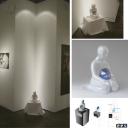
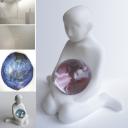
3. What experiences have most influenced your choice of subject matter,
medium and style?
My choice of subject matter has been informed to a great extent by the following two experiences:
When doing research for my project, I had the opportunity to attend an autopsy class at the medical faculty of the local university. When I saw all the dead bodies that had been donated for the medical students’ practical training I fainted.
Before I started with the hearse project in 2005, I visited a hearse factory to do some interviews. There were also cars waiting to be repaired, which means they had already carried dead bodies. I accidentally opened the door of one of those used cars and was immediately surrounded by the stench of death that had filled the inside of the car.
It was the starting point to experience “death” so very closely, which I had never felt so realistically until then. At this moment conflicting feelings, such as a sense of freedom and at the same time a sense of the emptiness of life, both fear of and a yearning for death, have been implanted deep inside of me. And I also realized that, paradoxical as it may seem, gazing upon death means staring at life.
As for the choice of medium and style – first there is a vision, then I look for the appropriate medium and style.
Although I could say that every experience influences me and my art work.


4. Is your formal or informal training as an artist useful? How?
The formal training taught me practical things – useful techniques, an understanding of the available materials, how to discuss about art, etc. However, the understanding of myself as an artist developed after graduation through autonomous activity.
Since I get the vision first, basically by making art, many physical, technical, and practical difficulties arise in the process. The hardest thing is to maintain a certain level, physically and mentally, and to retain the motivation to make the work resemble the initial vision as closely as possible.
I choose media that allow me to express this vision most effectively. This can be sculpture or drawing, painting, installation, video, or performance, for example. I also often mix different media and styles.
If a style works well, this can be an immediate and strong success. Sometimes, however, it can be quite a challenge for me, for example, when working with sculpture I may have lost the feeling for the materials due to lack of practice, or when working with the computer I may need a lot of patience until I master some new software.
Solving these problems is a great training for me as an artist, and at the same time I feel that I am growing as a human being.
5. Does your work reflect issues in yourself, in society or community?
What would you say is the purpose for making art?
It may be difficult to see whether it is reflected directly in my work.
However, since I am living in society and am part of the community, I might say that these things are reflected indirectly in my work.
Art does not have the same quick-acting influence as the entertainment media.
I think art works more like herbal medicine; you may feel the effects much later, but you feel them nonetheless.
I think that the purpose of making art is to repeatedly show the things that lie beyond one’s generation, which are actually visible yet seem invisible to many people and may have become forgotten. Thus art brings depth and wealth into life.
6. Do you appreciate culturally specific works of art? If so how does
your personal and cultural background show up in your work?
Yes, I do.
It is because each thing which man makes is very exciting and interesting, regardless of positive or negative. They can influence and reflect each other.
To me, both the things that are connected to the past and those connected to the future are like my contemporaries.
They have certainly influenced my art work, consciously or unconsciously.
7. Is there anything you would like to say about your local art scene or
the international art market, art education, and or system for art
exhibition?
As we know, the international art market has been damaged by the global financial crisis. It will probably work as a process of “natural selection” – not exactly natural, of course – for us artists, the art scene, and the art market.
However, I see this situation as a good opportunity for each of us to reconsider important issues such as the quality of art, the management of budgets, the selection of programs, artistic orientation or strategy, and maybe to solve these problems by using our imagination and creativity to the fullest.
8. How does your current portfolio fit into the rest of your body of work?
Actually, my works are all connected to each other in my view.
A new piece of work is always the summary of my previous work.
And I am especially satisfied with my current work, because I feel that my past work has been leading up to this vision and that I have achieved what I had wanted to express.
My current work, a series called “Milky Way”, is closest to what I wanted to express, the most honest and true representation of my vision.
Nothing is more dramatic than the process where a work and an artist charm each other, the distance narrowing, one assimilating the other.
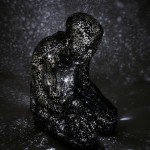
Until recently, I actually worked very hard in the studio, therefore I looked again at my previous work after a long time.
When I discover messages in my past work which I have not noticed myself before it is like stumbling across a time capsule.
What will happen to my work 10 or 20 years from now, what kind of message will be received from my work at that time?
To see more of Mihoko’s work, including her video pieces, please visit: www.mihoko-ogaki.com
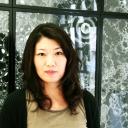
*Translated from Japanese by Sayaka Honsho
Back to Open Portfolios

